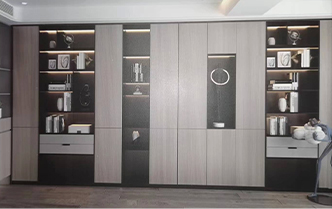- Home
- duplex board manufacturing process exporters
Dec . 04, 2024 16:54 Back to list
duplex board manufacturing process exporters
The Duplex Board Manufacturing Process Understanding Exporters' Roles and Market Trends
Duplex board, known for its excellent surface quality and rigidity, plays a pivotal role in various industries, particularly in packaging, printing, and paper products. The manufacturing process of duplex board involves a series of intricate steps, each contributing to the final product's quality and characteristics. In this article, we will explore the duplex board manufacturing process and the pivotal role of exporters in this industry.
Overview of Duplex Board
Duplex board is a type of paperboard made from multiple layers of paper fibers. It is primarily used in the production of packaging materials, such as boxes, cartons, and displays. The board is characterized by its two-sided finish one side is typically smooth and glossy, while the other side offers a more textured surface. This versatility allows duplex board to be printed on, embellished, and used for various applications in consumer goods, food packaging, and retail displays.
The Manufacturing Process
The manufacturing process of duplex board can be divided into several critical stages
1. Pulping The process begins with the collection of raw materials, which primarily include recycled paper and wood pulp. The raw materials are processed in a pulping machine, where they are mixed with water and chemical additives. This mixture is subjected to mechanical and chemical treatments to break down the fibers, resulting in a slurry of pulp.
2. Sheet Formation The pulp slurry is then introduced to a paper machine, where it is spread onto a moving wire mesh or conveyor belt. Water is drained from the pulp, allowing the fibers to bond together and form a continuous sheet. This stage determines the thickness and weight of the duplex board.
3. Pressing The newly formed sheet of paper passes through several press rolls, reducing its moisture content and increasing density. This process enhances the board's strength and prepares it for the drying phase.
4. Drying The pressed sheets are then passed through heated dryers, which further reduce moisture content to achieve the desired final properties. It's essential to monitor the temperature and drying time to prevent damage to the board.
5. Coating Once dried, the duplex board may undergo a coating process. Coating materials, such as clay or chemicals, are applied to one or both sides of the board to enhance printability, opacity, and surface smoothness. The coated paper is then subjected to a glazing or calendering process to achieve a glossy finish.
duplex board manufacturing process exporters

6. Cutting and Packaging The final step involves cutting the duplex board into specified sizes and packaging it for shipment. Quality control checks are conducted to ensure that the product meets industry standards and customer specifications.
The Role of Exporters
Exporters play a crucial role in the duplex board industry by connecting manufacturers with international markets. They help to facilitate the trade of duplex board by
- Identifying Markets Exporters conduct market research to identify potential markets for duplex board products. They understand regional market needs, preferences, and regulatory requirements, enabling manufacturers to tailor their products accordingly.
- Quality Assurance Many exporters have established quality control processes to ensure that the duplex board supplied meets the international standards. This is particularly important in industries where packaging quality can significantly impact product perception.
- Logistics and Distribution Managing logistics is a considerable challenge in international trade. Exporters handle the complexities of shipping, customs clearance, and distribution, ensuring timely delivery of products while optimizing shipping costs.
- Networking Exporters often have extensive networks that provide manufacturers access to retail buyers, wholesalers, and end-consumers across the globe. This network can be invaluable for marketing and distributing duplex board products in new regions.
Market Trends
The demand for duplex board has been steadily increasing due to the growing packaging sector, particularly in industries such as e-commerce and food and beverage. Furthermore, the shift towards sustainable packaging solutions has led to a rise in the use of recycled materials in duplex board production. Exporters who embrace eco-friendly practices and supply sustainably produced duplex board may find themselves at a competitive advantage in the market.
In conclusion, the duplex board manufacturing process is a complex but essential operation that supports various industries. With the support of exporters, manufacturers can effectively navigate the global market, ensuring that their high-quality duplex board reaches customers worldwide. As sustainability continues to drive industry trends, the future looks promising for both manufacturers and exporters in the duplex board sector.
Latest news
-
High-Quality Bathroom Cabinet Contact Paper – Durable & Stylish Leading Suppliers, Exporters, Manufacturers
NewsJul.08,2025
-
Premium Wood Contact Paper for Desk – Reliable Suppliers & Exporters
NewsJul.08,2025
-
Premium Contact Paper for Table Top – Durable & Stylish Surface Solution from Leading Manufacturer
NewsJul.07,2025
-
Duplex Board with Grey Back - Reliable Supplier & Competitive Price Manufacturer & Exporter
NewsJul.07,2025
-
Premium White Contact Paper on Cabinets – Trusted Exporters & Suppliers
NewsJul.06,2025
-
High-Quality Duplex Board Packaging for Food Reliable Manufacturer & Supplier
NewsJul.06,2025

